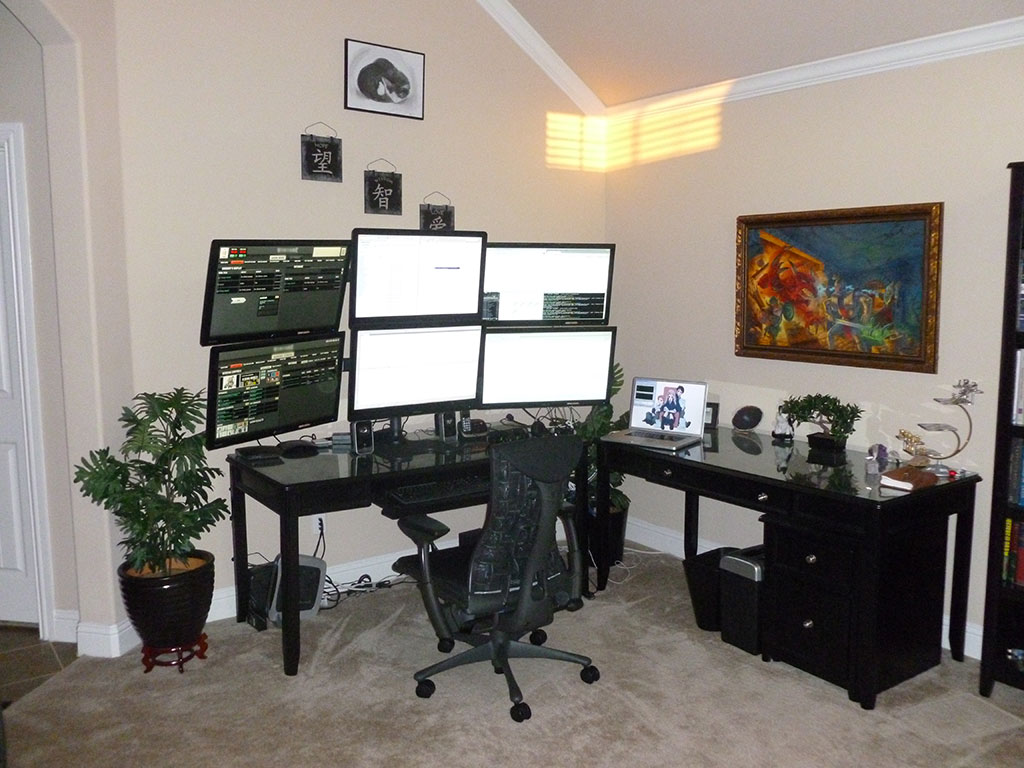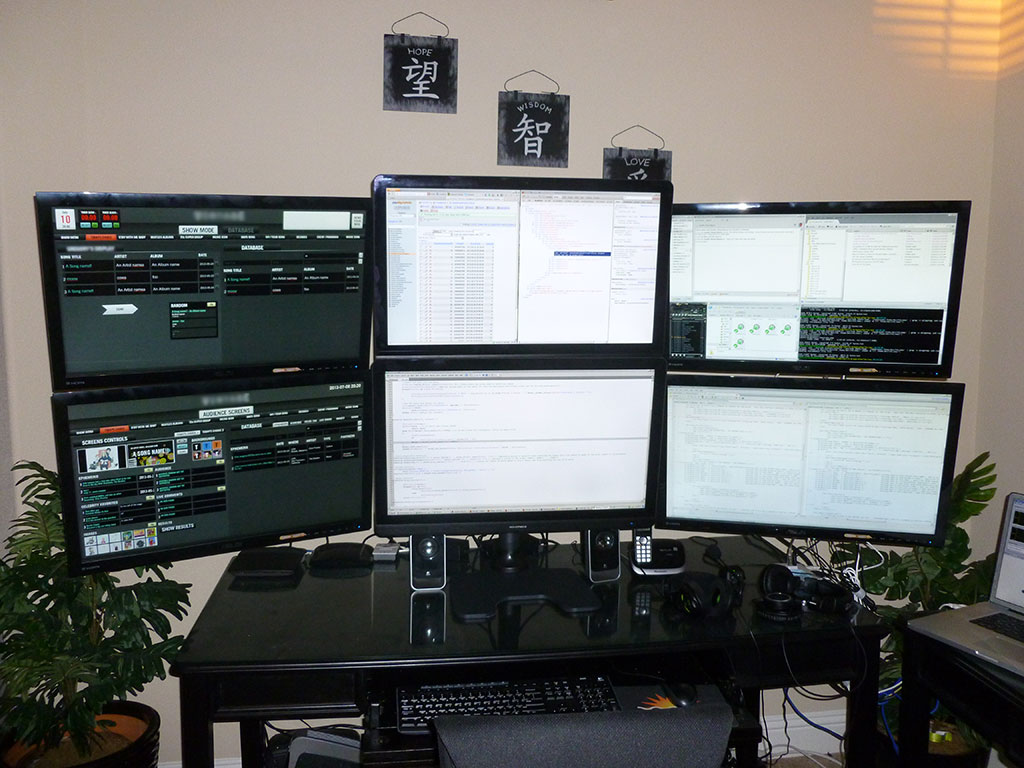Posted by: Dakusan
« on: August 02, 2013, 02:56:28 pm »Originally posted on: 08/02/13
I had the need this year to upgrade to a 6+1 monitor setup for some of the work I’ve been doing.


It took me a bit to get everything how I wanted, using Display Fusion for multi monitor control, and a customized version of Window Manager for organizing window positioning. I am very happy with the final result.
However, there was one minor annoyance I decided to tackle as a fun get-back-into-reverse-engineering project (it’s been years since I’ve done any real fun programming, which saddens me greatly). When in the lock/logon screen for Windows 7, only one monitor can show a background, and that background must be limited to a filesize of 250KB, which can greatly reduce the quality of the image.
The C:\Windows\System32\authui.dll controls the lock screen behavior, so it is to this file I looked to for the solutions. Before I go on, there are 2 very important notes I should make:
- It can be very dangerous to modify system DLLs. This could crash your operating system, or even make it not able to load! Always backup the files you are modifying first, and make sure you are comfortable with restoring them somehow (most likely using a separate operating system like a Linux Boot CD).
- You need to make sure you are actually editing the right file when you open it up. While the file you want will always be in c:\Windows\System32, on 64-bit windows machines there is also a directory at c:\Windows\SysWOW64 that contains a 32-bit version of the file. (Brilliant naming scheme Microsoft! 32 bit files in the “64” directory and vice versa). Depending on the software you are using, sometimes when you try to access the authui.dll in the System32 directory (~1.84MB), it actually modifies the file in SysWOW64 (~1.71MB) using obfuscated Windows magic.
After a little bit of playing, so far I’ve solved the 250KB size limitation, and I plan on continuing to tinker with it a bit more until the other is solved too. To start, you will need to give yourself file system access to modify the c:\Windows\System32\authui.dll file. To do so, go into the file’s property page, change the owner to yourself, and then give appropriate user permissions so you can modify it as you see fit.
Open the authui.dll in your favorite hex editor and replace:What this change actually does is update the 256,000 value to (2^24)-1 in the following code:
| jmp __imp_GetFileSize | |
| 41 B9 00 E8 03 00 | mov r9d, 3E800h |
| 41 3B C1 | cmp eax, r9d |
| jnb short loc_xxx |
It’s been a bit tedious working on the assembly code of the authui.dll, as my favorite disassembler/debugger (ollydbg) does not work with 64-bit files, and I am not very comfortable with other dissasemblers I have tried.  Alas. Hopefully more coming soon on this topic.
Alas. Hopefully more coming soon on this topic.


